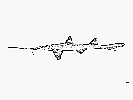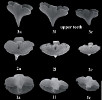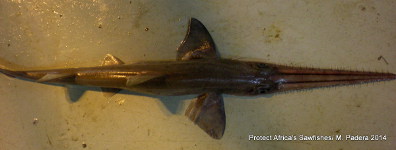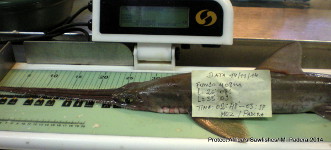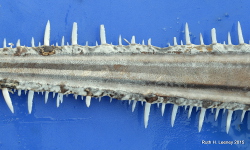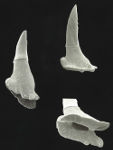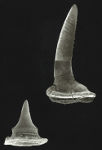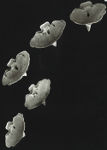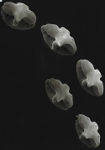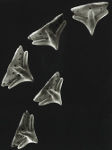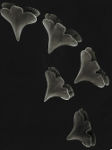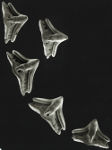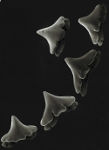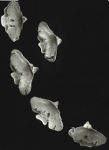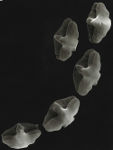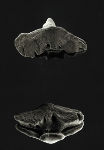Pliotrema warreni
Regan, 1906
Sixgill sawshark
Classification: Elasmobranchii Pristiophoriformes Pristiophoridae
Reference of the original description
Descriptions of new or little known fishes from the coast of Natal. Annals of the Natal Government Museum, 1(1), 1–6
Descriptions of new or little known fishes from the coast of Natal. Annals of the Natal Government Museum, 1(1), 1–6
Image of the original description
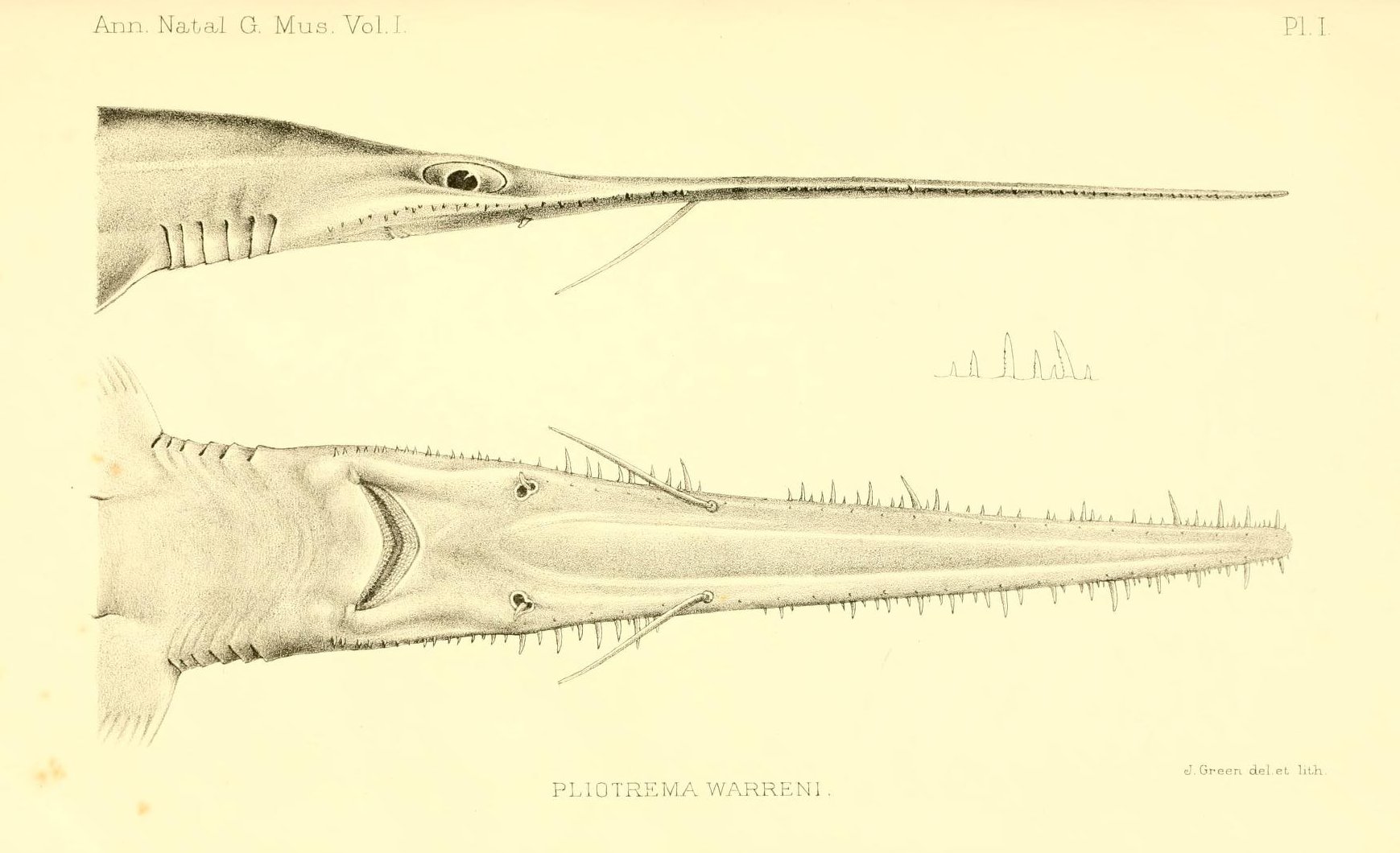
Pliotrema warreni Regan, 1906

Pliotrema warreni Regan, 1906
Synonyms / new combinations and misspellings
Pliotrema warrei
Pliotrema warrei
Description :
Citation: Pliotrema warreni Regan, 1906: In: Database of modern sharks, rays and chimaeras, www.shark-references.com, World Wide Web electronic publication, Version 04/2024
Please send your images of "Pliotrema warreni" to info@shark-references.com

Pliotrema warreni Regan, 1906, © Ruth Leeney

Pliotrema warreni Regan, 1906, © Ruth Leeney
Common names
 Sägehai,
Sägehai,  Tiburón sierra del Cabo,
Tiburón sierra del Cabo,  Requin scie flutian,
Requin scie flutian,  Requin scie flutien,
Requin scie flutien,  Sixgill sawshark
Sixgill sawshark
 Sägehai,
Sägehai,  Tiburón sierra del Cabo,
Tiburón sierra del Cabo,  Requin scie flutian,
Requin scie flutian,  Requin scie flutien,
Requin scie flutien,  Sixgill sawshark
Sixgill sawshark
Short Description
Description after EBERT, 2013 [19900]: Diagnostic Features: Barbels more posteriorly situated on snout than in Pristiophorus, prebarbel snout 64 to 67% of preoral length. Larger rostral sawteeth with 2 to 8 mesially–directed barbs on their posterior edges. Six paired gill slits. Teeth with transverse ridges on basal ledges. Most teeth with basal ledges notched and with a prominent rounded mesolabial peg. Lateral trunk denticles very widely spaced and only semi–imbricated in large specimens, usually separated by distances greater than their crown lengths. Six gill arches, with hypobranchials 2 to 5 present, hypobranchial 4 enlarged and reflexed distally; basibranchial copula with deep anterior concavities for hypobranchials 4 and 5, with lateral wings for articulation of ceratobranchial 6, and with a joint on its posterior pointed tip. Vertebral counts: total vertebral counts 146 to 157, precaudal vertebral counts 101 to 108, monospondylous vertebral counts 48 to 53. Intestinal valve with 7 to 8 turns. Colour: olive brown above, lighter below; no prominent markings. Field Marks: Small slender sharks with six pairs of gill openings, saw–like snout with barbels and barbed sawteeth, two spineless dorsal fins, and no anal fin.
Description after EBERT, 2013 [19900]: Diagnostic Features: Barbels more posteriorly situated on snout than in Pristiophorus, prebarbel snout 64 to 67% of preoral length. Larger rostral sawteeth with 2 to 8 mesially–directed barbs on their posterior edges. Six paired gill slits. Teeth with transverse ridges on basal ledges. Most teeth with basal ledges notched and with a prominent rounded mesolabial peg. Lateral trunk denticles very widely spaced and only semi–imbricated in large specimens, usually separated by distances greater than their crown lengths. Six gill arches, with hypobranchials 2 to 5 present, hypobranchial 4 enlarged and reflexed distally; basibranchial copula with deep anterior concavities for hypobranchials 4 and 5, with lateral wings for articulation of ceratobranchial 6, and with a joint on its posterior pointed tip. Vertebral counts: total vertebral counts 146 to 157, precaudal vertebral counts 101 to 108, monospondylous vertebral counts 48 to 53. Intestinal valve with 7 to 8 turns. Colour: olive brown above, lighter below; no prominent markings. Field Marks: Small slender sharks with six pairs of gill openings, saw–like snout with barbels and barbed sawteeth, two spineless dorsal fins, and no anal fin.
Distribution
Western Indian Ocean: off Madagascar and from southern Mozambique to Cape Agulhas, South Africa. Source: www.gbif.org
Western Indian Ocean: off Madagascar and from southern Mozambique to Cape Agulhas, South Africa. Source: www.gbif.org
Human uses
fisheries: of no interest; gamefish: yes
fisheries: of no interest; gamefish: yes
Biology
Ovoviviparous, with 5 to 7 young in a litter (others have 7 to 17 developing eggs). Size at birth about 35 cm. Embryos feed solely on yolk [733]. Feeds on fish, cephalopods, benthic invertebrates and zooplankton [536].
Ovoviviparous, with 5 to 7 young in a litter (others have 7 to 17 developing eggs). Size at birth about 35 cm. Embryos feed solely on yolk [733]. Feeds on fish, cephalopods, benthic invertebrates and zooplankton [536].
Size / Weight / Age
TL (max): 136 cm, TL (mature) male: 83 cm; female: 68-87 cm; TL (birth): 35-37 cm [19900]
TL (max): 136 cm, TL (mature) male: 83 cm; female: 68-87 cm; TL (birth): 35-37 cm [19900]
Remarks
shark-references Species-ID=4894;
shark-references Species-ID=4894;
Parasites (arranged by Jürgen Pollerspöck)
Nematoda
Copepoda
Nematoda
Copepoda
- Achtheinus oblongus Wilson, 1908 [7660] [15303] [15303] [27172] [28858]
- Achtheinus pinguis Wilson, 1912 [14331] [27172] [28858]








